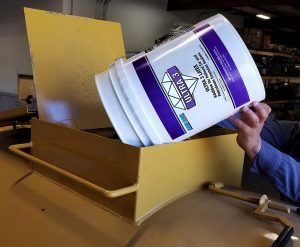 Additives are designed to enhance and strengthen the natural qualities of sealers. Although it sounds like an elementary process, there are a few variables to consider to achieve effective results.
Additives are designed to enhance and strengthen the natural qualities of sealers. Although it sounds like an elementary process, there are a few variables to consider to achieve effective results.
Being in business for over 60 years, we’ve been asked many questions about sealer additives. To sum it up best, there are three critical things you need to know:
1. Can I incorporate multiple additives into my sealer?
It is good practice to utilize one additive type sold by the manufacturer of your sealer. Mixing products made by different manufacturers is generally not advisable as not all additive products are compatible with one another. Also make sure that the additive is designed to be used with your sealer type (i.e. refined coal tar, asphalt, petroleum, etc.).
2. What is the difference between sealing with additives and sealing without?
Differences between sealing with and without additives is dependent on the type and amount of additive used, as well as application and environmental conditions. In general, sealing with additives provides the following benefits compared to sealing without:
- Extends sealer durability and longevity
- Improves flexibility to help prevent cracking
- Improves adhesion and cohesion properties of sealer
- Increases resistance to extreme temperatures
- Increases resistance to chemicals
- Increases color retention
- Shortens the time between coats or re-opening to traffic when a fast-drying additive is used
- Adds a degree of cost that may be offset by allowing for a greater amount of dilution
Keep in mind that some sealers already have additives incorporated during manufacturing such as GemSeal PolyTar®, so check with your manufacturer before you mix.
3. Which one is right for my job?
Sealer and additive manufacturers provide recommendations for use of their products and include datasheets and mix design tables. The technical datasheet may give a general overview on what that particular additive may be good for, but your sales representative can provide better guidance regarding your specific need. For example, a colder climate may benefit from using an additive that imparts greater flexibility to better withstand freeze/thaw cycles. Areas with high humidity may benefit from a drying agent to help the sealer cure faster. For high-traffic areas or turning lanes, choose an additive that will enhance overall bond strength. GemSeal has a comparison chart to help you select the right one.
If you have additional questions about additives, you’re in the right place. Call or contact us today.


 Paul Raymond /
May 21 , 2020
Paul Raymond /
May 21 , 2020 


